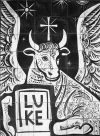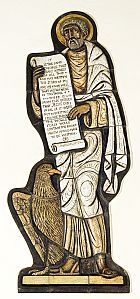
The Gospel of Luke
The Widow and the Judge: Lk 18,1-8
The preceeding passage, 17,20-37, indicated that the return of the Son of Man would be delayed and when it did come it would do so suddenly.
Words of encouragement are therefore needed. The Lord stresses the need to pray and not to give up.
In 18,1, he refers to Jesus as the Lord (17,5 and 18,6). It is then said for both judge and widow that they are from a city. This indicates that the evangelist is writing for his community several decades later at a time when the early Christians were preparing for a longer wait for the return of the Lord.
The story begins with a judge who does not fear God, though the biblical fear of the Lord is the beginning of wisdom (Prov 1,7, Psalm 110,11 and elswhere). Nor we are told does he care for the people.
Widows were particularily vulnerable and helpless; the widow of Nain losing her only son would as we have seen been a good example (7,11-15). The story of Naomi in the book of Ruth is about this. Judges had a special duty towards the vulnerable including widows (Dt 10,18 with Dt 10,12 also refering to the need to fear God). So this Judge is failing in his duty until stirred into action by the woman's persistance (verse 5). Indeed, the Greek could mean that he thought she would give him a black eye. The story ends here.
Jesus' comment marking the point of the story follows in verses 6-8. God will grant justice to his people. However, the need is for faith (18,8). The reference to the Son of Man indicates how the section concludes what is said in chapter 17 about the coming of the Son of Man.
We can now return to the main page.
The Sunday Gospel
The concept of holy war, "putting to the ban", utterly destroying the enemy without mercy (Dt 7,1-11) is a strange, harsh one to us today. Self protection was all important for the people of Israel as well as their special status as a people holy to the Lord God (Dt 7,6). Lines like Ex 17,13 are often edited out of our lectionaries but they are a reminder of the harshness of life for the early Israelites.
This seems to me an odd choice of reading. For our purposes we can see Moses lifting up his rod as a sign of intercessory prayer though whether this is the original meaning is another matter. Note too that Moses needs two assistants to hold up his arms. Moses does not pray alone.
We can now return to the main page.
